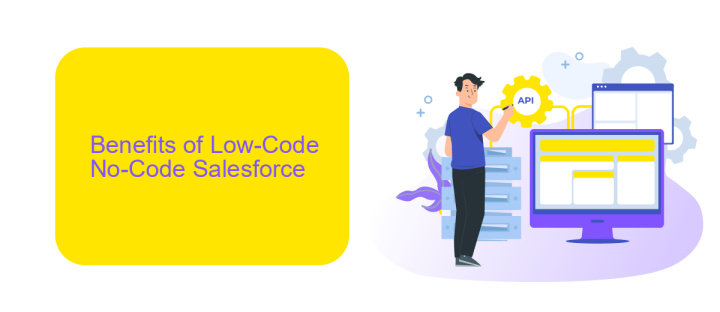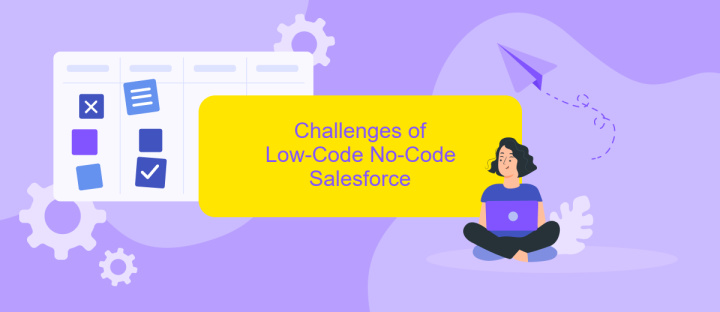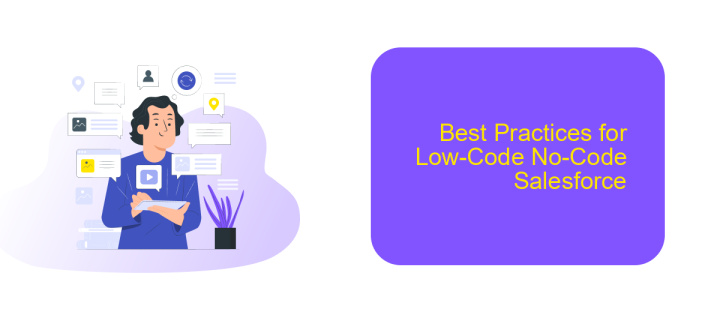Low-Code No-Code Salesforce
Low-Code No-Code (LCNC) platforms are revolutionizing the way businesses approach application development, and Salesforce is at the forefront of this transformation. By enabling users to create and deploy applications with minimal coding, Salesforce's LCNC tools empower organizations to accelerate innovation, reduce costs, and enhance agility. This article explores the key features and benefits of Salesforce's Low-Code No-Code solutions.
Introduction
In today's fast-paced business environment, the demand for rapid application development has never been higher. Low-Code and No-Code platforms, especially within Salesforce, have emerged as powerful solutions to meet this need. These platforms empower users with little to no programming experience to create, customize, and deploy applications efficiently, bridging the gap between business requirements and IT capabilities.
- Accelerated development timelines
- Reduced dependency on specialized developers
- Enhanced agility and flexibility
- Cost-effective solutions
One of the key advantages of using Low-Code and No-Code platforms in Salesforce is the ease of integrating various services and tools. For instance, ApiX-Drive is a service that simplifies the process of connecting different applications, automating workflows, and ensuring seamless data exchange. This integration capability further enhances the potential of Low-Code and No-Code solutions, making them indispensable in today's digital transformation initiatives.
Benefits of Low-Code No-Code Salesforce

Low-Code No-Code Salesforce offers a multitude of benefits, making it an attractive option for businesses aiming to streamline their operations. One of the primary advantages is the significant reduction in development time and costs. By enabling users to create and customize applications without extensive coding knowledge, organizations can quickly adapt to changing market demands and improve their agility. This democratization of app development empowers non-technical staff to contribute to digital transformation initiatives, leading to faster innovation and improved productivity.
Another key benefit is the ease of integration with other systems and services. Tools like ApiX-Drive facilitate seamless connectivity between Salesforce and various third-party applications, enhancing data flow and operational efficiency. This capability ensures that businesses can maintain a cohesive ecosystem without the need for complex, custom-coded integrations. Additionally, the intuitive drag-and-drop interfaces and pre-built templates available in Low-Code No-Code platforms reduce the risk of errors and ensure consistency across applications, further enhancing the overall user experience.
Challenges of Low-Code No-Code Salesforce

While Low-Code No-Code (LCNC) platforms like Salesforce offer numerous benefits, they also come with their own set of challenges. These challenges can impact the effectiveness and scalability of LCNC solutions, particularly in complex business environments.
- Limited Customization: LCNC platforms may not offer the same level of customization as traditional coding, which can be a limitation for businesses with unique needs.
- Integration Issues: Integrating LCNC solutions with existing systems can be challenging. Tools like ApiX-Drive can help streamline this process, but the initial setup may still require technical expertise.
- Scalability Concerns: As businesses grow, LCNC solutions may struggle to scale effectively, potentially requiring a shift to more robust, custom-coded solutions.
- Security Risks: While LCNC platforms strive to maintain high security standards, they may still be vulnerable to specific types of cyber threats, necessitating additional security measures.
- Dependency on Platform: Relying heavily on a single LCNC platform can create vendor lock-in, making it difficult to switch providers or integrate new technologies in the future.
Despite these challenges, LCNC platforms like Salesforce continue to be a valuable tool for many businesses. By being aware of these potential pitfalls and leveraging integration services like ApiX-Drive, organizations can better navigate the complexities and maximize the benefits of LCNC solutions.
Best Practices for Low-Code No-Code Salesforce

Implementing best practices in Low-Code No-Code Salesforce development ensures efficiency and scalability. Start by thoroughly planning your application design to align with business goals. This step minimizes the need for extensive future modifications.
Next, leverage Salesforce's native tools and features to maximize functionality without additional coding. Utilizing pre-built components and templates can significantly speed up the development process.
- Utilize declarative tools like Flow Builder for automation.
- Employ validation rules to maintain data integrity.
- Use ApiX-Drive for seamless third-party integrations.
- Regularly update and maintain your applications to adapt to evolving needs.
By adhering to these practices, you can create robust and adaptable Salesforce applications with minimal coding. This approach not only saves time but also reduces costs associated with traditional development methods.
- Automate the work of an online store or landing
- Empower through integration
- Don't spend money on programmers and integrators
- Save time by automating routine tasks
Conclusion
In conclusion, the Low-Code No-Code approach in Salesforce offers businesses a powerful way to accelerate digital transformation while minimizing the need for extensive coding expertise. By leveraging this innovative approach, organizations can streamline their development processes, reduce costs, and empower non-technical users to create and customize applications that cater to their specific needs.
Additionally, integrating services like ApiX-Drive can further enhance the capabilities of Low-Code No-Code platforms by simplifying the process of connecting various applications and automating workflows. This not only improves efficiency but also ensures seamless data synchronization across different systems. As businesses continue to evolve, embracing Low-Code No-Code solutions in Salesforce, complemented by robust integration tools, will be crucial for staying competitive and agile in the ever-changing digital landscape.
FAQ
What is Low-Code No-Code in Salesforce?
Can non-developers use Low-Code No-Code tools in Salesforce?
How can I integrate Salesforce with other applications using Low-Code No-Code tools?
What are the benefits of using Low-Code No-Code tools in Salesforce?
Are there any limitations to using Low-Code No-Code tools in Salesforce?
Apix-Drive will help optimize business processes, save you from a lot of routine tasks and unnecessary costs for automation, attracting additional specialists. Try setting up a free test connection with ApiX-Drive and see for yourself. Now you have to think about where to invest the freed time and money!


